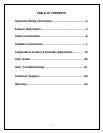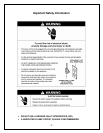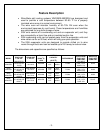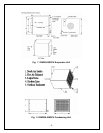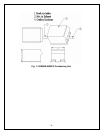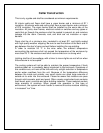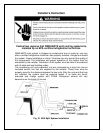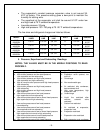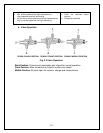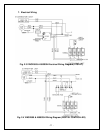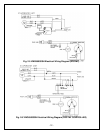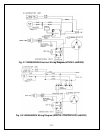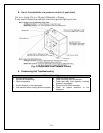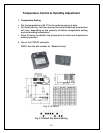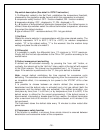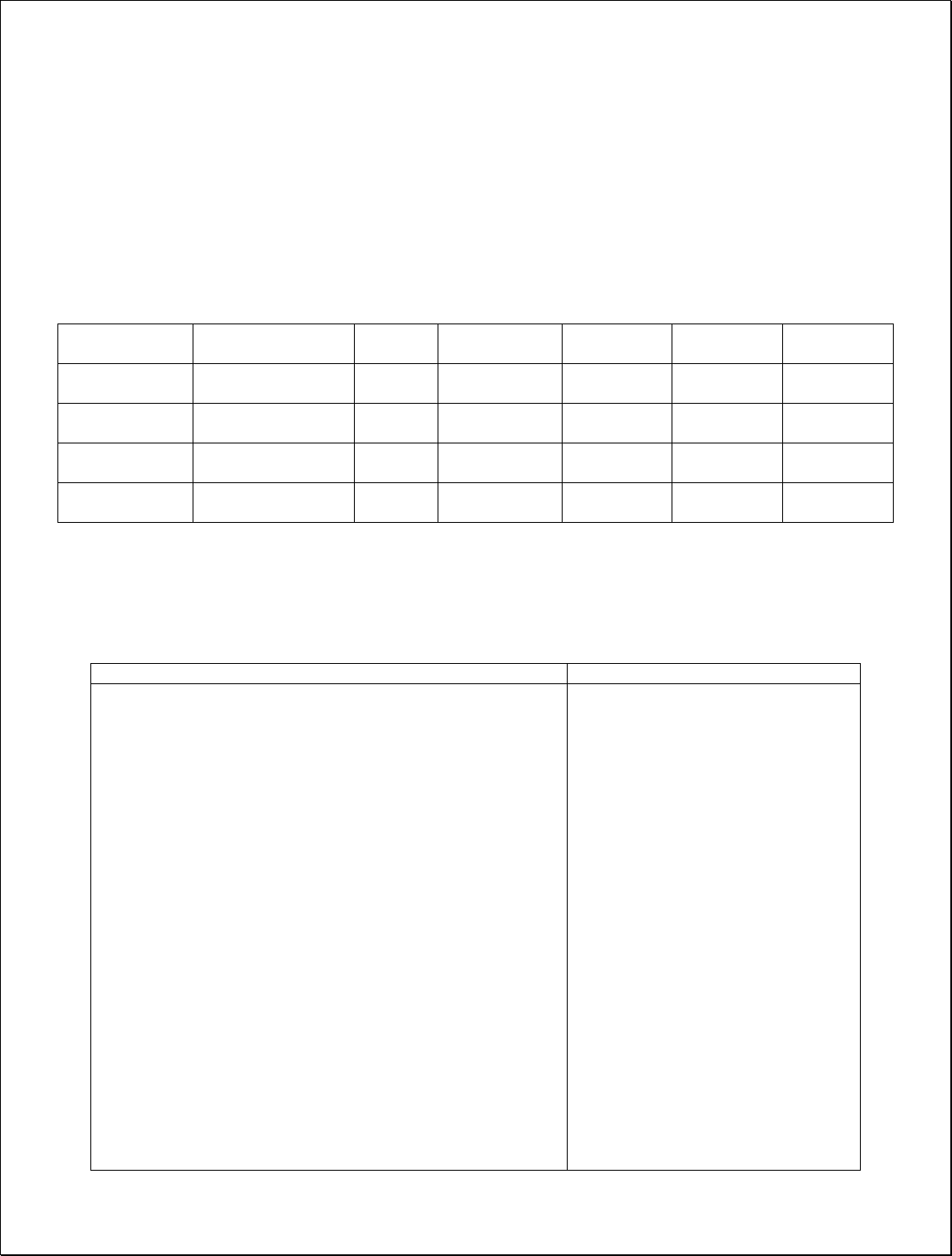
- 9 -
• The evaporator’s constant pressure expansion valve is set around 38-
40°F at factory. This pressure setting gives a dew point to maintain the
humidity for storing wine.
• The superheat at the evaporator unit shall be around 9-18°F under low
and high load at 75
°F ambient temperature.
• Low side pressure: 33 psig
• High side pressure: 130 -150 psig at 75 -90
°F ambient temperatures
The line sizes and refrigerant charges are listed as follows.
MODEL
REFRIGERATION
LINES
LIQUID
LINE
SUCTION
LINE
DUCT
DRAIN
LINE
CHARGE
VINO-
2500SSH
< 50 FT 1/4" OD 3/8” OD 8” 7/8” OD
R134a/
20 OZ
VINO-
4500SSH
< 50 FT 1/4" OD 1/2” OD 8” 7/8” OD
R134a/
26 OZ
VINO-
6500SSH
< 50 FT 1/4" OD 5/8” OD 10” 7/8” OD
R134a/
32 OZ
VINO-
8500SSH
< 50 FT 3/8" OD 5/8” OD 10” 7/8” OD
R134a/
38 OZ
5. Pressure, Superheat and Subcooling Readings
NOTES: THE VALVES MUST BE IN THE MIDDLE POSITIONS TO READ
PROPERLY.
Complaint Possible Causes
a. High suction pressure and low head pressure
b. High suction pressure and low head pressure
Low superheat and low subcooling
c. High suction pressure and high head pressure
Low superheat and high subcooling
d. High to normal suction pressure and high head pressure
Low subcooling
e. High suction pressure and high head pressure
Low subcooling
f. High suction pressure and high head pressure
High superheat
g. Low suction pressure and low head pressure
High superheat and low subcooling
h. Low suction pressure and low to normal head pressure
High superheat and high subcooling
i. Low suction pressure and low head pressure
Low subcooling
j. Low suction pressure and low head pressure
Low superheat and low subcooling
k. Low suction pressure and low to normal head pressure
High superheat and normal to high subcooling
l. Low suction pressure and normal head pressure
High superheat and normal subcooling
m. Low suction pressure and high head pressure
a. Compressor may be bad
b. Expansion valve opened, too
much oil
c. Overcharge
d. Non-condensable gas
e. Air restricted, dirty condenser,
bad condenser fans
f. High room temperature, high
evaporator load
g. Undercharge
h. Liquid line restricted after
receiver, solenoid valve
restricted
i. Suction line restricted
j. Air restricted at evaporator,
evaporator iced
k. Evaporator restricted
l. Expansion valve restricted
m. Both evaporator and condenser



